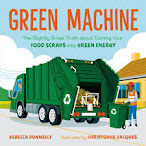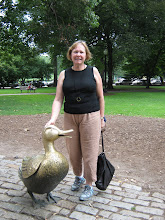When I was writing about Plant a Lemon Tree Day, I thought of other trees we should plant and wondered if olive trees had a day for themselves. There is. World Olive Tree Day is celebrated annually on 26th November. This day is dedicated to recognising the cultural, economic, and environmental significance of the olive tree, a plant that has a rich history and a global impact. But, November is a long way off and it is National Olive Day on the 1st June!
The olive odyssey began over six millennia ago when olive trees first took root in the Mediterranean basin. From the ancient Greeks and Romans to the Egyptians and Phoenicians, olives quickly became a symbol of peace, prosperity, and divine flavour.
Olives were revered in religious rituals and lauded for their medicinal properties. As maritime trade routes expanded, so did the reach of olives. These hardy trees adapted to diverse climates, flourishing in regions far beyond their Mediterranean birthplace. From the sun-soaked groves of Spain to the terraced hillsides of Italy, olives became a global sensation, leaving an indelible mark on the world’s culinary heritage.
The iconic olive branch, a universal symbol of peace, traces its roots back to ancient Greece. Legend has it that the goddess Athena gifted the olive tree to the city of Athens, and from its branches emerged the first olive oil. This liquid gold not only enriched their cuisine but also fuelled lamps that illuminated their nights. The Renaissance era witnessed a resurgence of interest in the culinary arts, and olives played a pivotal role. Olive oil became a staple in the kitchens of Europe’s elite, adding a touch of sophistication to the gastronomic landscape. Today, olive oil stands as a testament to the enduring allure of these remarkable fruits.
So are there picture books about olives? Of course, but you will need to search.
• Athena and the Olive Tree by Geraldine McCaughrean
Athena and the Olive Tree is one story in this collection of stories about Greek gods and goddesses.
• Olive by Edwina Wyatt Lilah’s beloved cat, Olive dies and all she’s left with is an olive tree to remember her by. Seasons pass and the tree grows but Lilah is too grief stricken to see its beauty and connection to Olive.
• My Olive Tree by Hazar ElbayyaA powerful story about the beauty of the olive tree and the importance of community in the face of hardship.
• These Olive Trees by Aya GhanamehOraib loves the olive trees that grow outside the refugee camp where she lives. Each harvest, she and her mama pick the small fruits and she eagerly stomp stomp stomps on them to release their golden oil. Olives have always tied her family to the land, as Oraib learns from the stories Mama tells of a home before war.
• Sitti's Olive Trees by Ndaa HassanThis is a story about the olive harvesting season in Palestine. Sitti shares memories of her ancestors planting and caring for their precious olive trees with Reema, her grand daughter. Reema is captivated by the beautiful story and learns the value of each drop of olive oil. A celebration of culture, family and storytelling with an aim to preserve values and traditions.
• Hilwa's Gifts by Sara SuleimanA heartwarming picture-book brings a tradition many thousands of years old—harvesting and pressing olives into oil—vividly to life, showing how customs unite us across time and space.
• Oli Olive's Oily Adventure by Amanda BaileyThis is the first book in Australia to educate our younger consumers about olive oil. This book uses Oli's character to show children the ins and outs of olive oil in a fun, friendly adventure from grove to pantry.
• Olive's Plate Dream by Tansy BoggonOlive has a dream - she does not want to be pressed into olive oil, even if it is health-promoting. She wants to be savoured whole.
• The Olive Tree by Elsa MarstonThe house next door to Sameer’s had been empty for as long as he could remember. The family had gone away when the war began. But now they were back, and he was ready to have fun with his new playmate. Together they could climb the big olive tree that overlooked both their gardens, and eat the delicious olives it produced. The only problem was that Muna, the little girl next door, didn’t want to play and she didn’t want to share the olives.
Interesting olive facts:
The oldest olive tree in the world is around 4,000 years old and can still be found producing fruit in its location on the island of Crete.
• The darker the olive, the riper it was when it was picked. Black olives are just olives that used to be green but got darker as they stayed on the tree longer.
• Spain is the largest producer of olives in the world, followed by Italy, Turkey, Greece and Morocco.
• Olive trees are normally pruned and kept fairly short to make it easy for them to bear fruit but, if left to themselves, they can actually grow as large as 26-49 feet in height.
• Olive trees live way longer than humans. In fact, the average lifespan of an olive tree is between 300 and 600 years.



















































